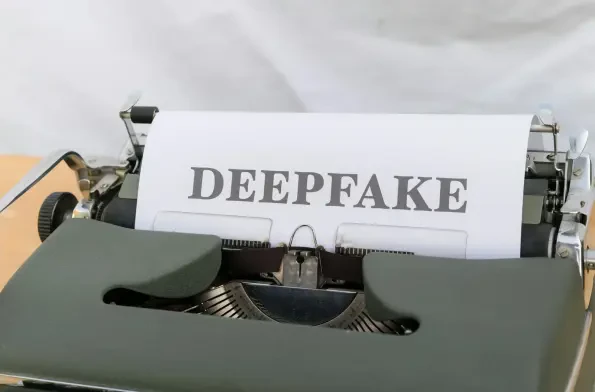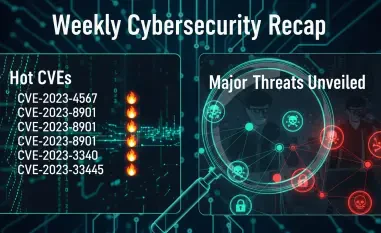In an era where digital deception can cost millions in a single scam, the rise of deepfake technology has emerged as a formidable challenge to security across industries like banking, healthcare, and retail. Imagine a scenario where a finance worker, believing they are on a video call with trusted colleagues, transfers $25 million to fraudsters, only to later discover the entire interaction was fabricated by artificial intelligence. Such incidents are no longer hypothetical but a growing reality, driving the urgent need for innovative solutions. One individual at the forefront of this battle is Vijay Balasubramaniyan, a Georgia Tech alumnus with a PhD in Computer Science, who has dedicated his career to combating digital fraud as the CEO and co-founder of Pindrop Security. His journey from academic research to leading a company that tackles AI-generated fraud offers a compelling glimpse into how technology can be both a threat and a savior in the modern landscape.
The Rising Threat of Deepfake Fraud
Escalating Incidents and Financial Losses
The alarming surge in deepfake attacks has transformed digital fraud from a niche concern into a widespread crisis affecting businesses globally. A striking example unfolded in Hong Kong last year, where a finance worker was deceived by a deepfake video impersonating senior executives, resulting in a staggering $25 million loss in a single transaction. Reports from industry experts indicate that the frequency of such sophisticated scams has skyrocketed, with attacks escalating from rare occurrences to multiple daily incidents per customer. This rapid increase is fueled by the accessibility of generative AI tools, which enable even amateur fraudsters to craft convincing video and audio imitations. Additionally, the shift to remote communication, accelerated by global events like the COVID-19 pandemic, has created fertile ground for these deceptions, as face-to-face verification becomes less common. The financial and reputational damage caused by these scams underscores the critical need for advanced countermeasures to protect vulnerable sectors.
Technological Catalysts Behind the Surge
Delving deeper into the factors driving this wave of digital fraud reveals a convergence of technological advancements and societal shifts that have empowered cybercriminals. Generative AI, with its ability to replicate voices and visuals with uncanny precision, has lowered the barrier for creating fraudulent content, making it accessible to individuals with minimal technical expertise. The pandemic further amplified this threat by pushing interactions online, where distinguishing between real and fake becomes increasingly difficult without physical cues. A chilling case involves a West African fraudster known as Williams, who replaced a team of human scammers with AI-driven bots capable of conducting full conversations around the clock. This level of automation highlights how technology has scaled the potential for fraud to unprecedented levels. As these tools continue to evolve, the challenge lies in staying ahead of perpetrators who exploit trust and familiarity in digital exchanges, necessitating robust detection systems.
Innovations in Deepfake Detection
Cutting-Edge Technology to Unmask Fraud
In response to the burgeoning threat of deepfakes, Pindrop Security, under Vijay Balasubramaniyan’s leadership, has developed groundbreaking technology designed to detect and analyze AI-generated content with remarkable precision. Unlike human perception, which often succumbs to familiarity and pattern recognition, Pindrop’s systems focus on subtle discrepancies that escape the naked eye or ear. Their voice analysis technology, for instance, processes 16,000 samples per second to identify errors in synthetic audio that are imperceptible to most listeners. Beyond mere detection, the company’s tools can trace the specific systems used to create fraudulent content, offering valuable insights into the methods employed by cybercriminals. This capability is vital for industries where trust is paramount, as it not only flags deception but also aids in understanding and preventing future attacks. Such advancements represent a significant step forward in safeguarding digital interactions against increasingly sophisticated threats.
Expanding Solutions for Real-Time Challenges
Pindrop Security’s commitment to innovation extends beyond current capabilities, with ambitious plans to address emerging challenges in real-time scenarios. A forthcoming product aims to detect deepfakes during live video conferences, a critical need as fraudulent job interviews and deceptive business meetings become more prevalent. This development is particularly relevant in a world where remote work and virtual interactions are standard, increasing the risk of identity impersonation. Recently, the company secured $100 million in funding from investors to bolster these efforts, signaling strong confidence in their approach to combating digital fraud. Originally focused on voice call deception for banks since its founding in 2011, Pindrop has evolved to tackle broader threats, reflecting the dynamic nature of cybercrime. This expansion highlights a proactive stance in adapting to new risks, ensuring that businesses can verify identities with confidence in an era where digital trust is constantly tested.
Roots and Impact of a Visionary Leader
From Academic Research to Industry Leadership
The foundation of Pindrop Security’s success can be traced back to Vijay Balasubramaniyan’s formative years at Georgia Tech, where his PhD research under advisor Mustaque Ahamad laid the groundwork for innovative fraud detection methods. His academic work, published in a top-tier security conference, demonstrated a keen understanding of voice deception challenges, which later became the cornerstone of Pindrop’s technology. Starting the company in 2011, Balasubramaniyan transformed theoretical insights into practical solutions for real-world problems, initially targeting voice call fraud in the banking sector. This transition from academia to entrepreneurship exemplifies how rigorous research can translate into impactful industry applications. His story serves as a testament to the value of blending scientific inquiry with entrepreneurial drive, creating tools that address pressing security needs in a digital-first environment.
Sustained Connection to a Nurturing Ecosystem
Balasubramaniyan’s ongoing relationship with Georgia Tech remains a vital component of his mission to combat digital fraud through Pindrop Security. Regularly engaging with faculty and hiring alumni for research teams, he maintains a strong link to the institution that shaped his early career. Additionally, alongside his wife, he has endowed a scholarship to support students with ambitious dreams but limited resources, reflecting a commitment to fostering the next generation of innovators. He often credits Georgia Tech’s location in Atlanta, distanced from Silicon Valley’s trend-driven culture, for encouraging grounded, science-based solutions over fleeting fads. This perspective emphasizes the importance of practical, research-driven innovation in addressing complex challenges like deepfake fraud. The synergy between personal background, institutional support, and a focus on meaningful impact continues to drive Pindrop’s efforts in securing digital interactions across diverse industries.
Reflecting on a Digital Defense Legacy
Looking back, the journey of Vijay Balasubramaniyan and Pindrop Security marks a pivotal chapter in the fight against deepfake fraud, showcasing how academic roots can grow into industry-defining solutions. Their technology, adept at uncovering the minute flaws in AI-generated content, sets a high standard for digital security at a time when scams proliferate with alarming speed. The substantial investment of $100 million underscores the trust placed in their vision to protect businesses from evolving threats. Moving forward, the focus should shift to broader collaboration across sectors to integrate such detection tools into everyday digital platforms, ensuring seamless protection against impersonation. Equally important is the continued support for research and education initiatives, as seen in Balasubramaniyan’s contributions to Georgia Tech, to inspire and equip future innovators. As deepfake technology advances, proactive measures and shared knowledge will be essential to maintain trust in an increasingly virtual world.













